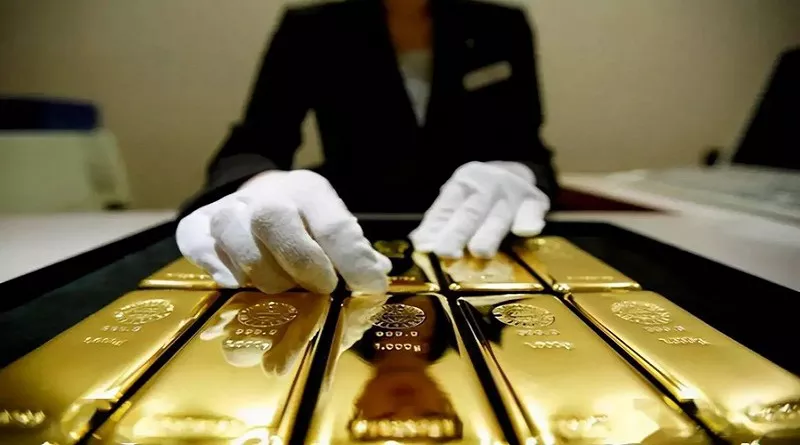Uzbekistan has once again led the world in net gold sales, according to data from the World Gold Council (WGC). In March 2025, the Central Bank of Uzbekistan sold 11 tonnes of gold, bringing its total sales for the first quarter to 15 tonnes — more than any other country. As global gold prices rose in March, Uzbekistan’s gold and foreign exchange reserves surged by nearly $3 billion, reaching an all-time high of nearly $50 billion.
A significant contributor to this achievement is the Navoi Mining and Metallurgical Combine, which ranks as the fourth-largest gold producer globally and is Uzbekistan’s largest taxpayer. In 2024, the company increased its gold output by 5.4%, generating revenues of $7.4 billion.
Gold Exports Driving Economic Growth
Since Uzbekistan began actively exporting gold in 2018, it has remained a dominant player in the global gold market. Revenue from gold exports plays a crucial role in supporting the national economy, financing infrastructure projects, and strengthening financial resilience. According to Uzbek sources, the country’s gold and foreign exchange reserves are essential for maintaining macroeconomic stability, providing a “safety cushion” against potential disruptions such as commodity price fluctuations, international sanctions, global financial crises, or currency market volatility.
These reserves are critical in stabilizing the national currency, meeting external debt obligations, and financing imports during crises.
Risks of Volatile Gold Prices
However, the International Monetary Fund (IMF) has raised concerns about the impact of volatile gold prices on Uzbekistan’s economy. The IMF warns that high gold prices could create inflationary pressure, while falling prices could reduce government spending capacity, increasing macroeconomic risks. To mitigate these risks, the IMF has recommended that Uzbekistan minimize the impact of gold price fluctuations on its fiscal policy. Experts note that a drop in gold revenue could force the government to cut expenditures, slowing economic growth and negatively affecting sensitive sectors like social services.
Central Asia’s Strong Gold Export Performance
In addition to Uzbekistan, other Central Asian nations, including Kyrgyzstan and Kazakhstan, have also excelled in gold exports. In February 2025, Kazakhstan’s National Bank sold 8 tonnes of gold, solidifying the country’s position among the top global gold sellers. Unlike the broader trend of central banks increasing their gold reserves, Kazakhstan and Uzbekistan have opted to sell gold actively. As of March 1, Kazakhstan’s foreign exchange reserves stood at nearly $50 billion, with more than $22 billion attributed to monetary gold, totaling 280 tonnes.
Global Gold Price Trends
Analysts project that gold prices will continue to rise in 2025. The average price of a troy ounce is expected to reach $3,140, with prices forecast to rise to $3,350 by the end of the year and $3,700 in 2026. One major factor driving this increase is the rising demand for gold from central banks. According to Deutsche Bank, central banks, which accounted for just 10% of global gold demand in 2022, could contribute 25% of demand by 2025.
This surge in gold prices is also linked to growing global trade tensions, particularly with the imposition of 10% tariffs on imports from China by the U.S. and expanded trade restrictions targeting the European Union. These tensions have raised concerns about a slowdown in global trade and higher inflation, as tariffs push up import costs. In times of instability, gold is often viewed as a safe-haven asset, and this trend continues today.
Central Asia’s Growing Geopolitical and Economic Influence
Uzbekistan and Kazakhstan are asserting their importance in the global gold market. These countries are not just suppliers of raw materials but are also shaping the future of the precious metals market. Through strategic management of their gold and foreign exchange reserves, active gold sales, and reinvestment of export revenues into domestic development, both nations are demonstrating their ability to use natural resources as a tool for economic stability, growth, and resilience. This positions Central Asia not only as a resource hub but also as a key player in the financial dynamics of Eurasia.


